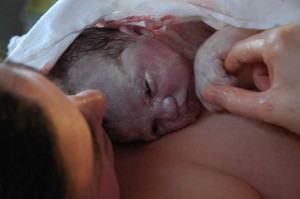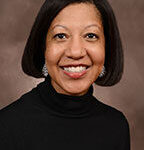Childbirth is a natural body process. Physical activity can be beneficial both during and after your pregnancy. Exercise is thought to strengthen abdominal and pelvic muscles, and reduce the likelihood of postpartum depression. It also helps mothers return to a healthy weight. Depending on your overall health status, hospital course, and pre-pregnancy level of exercise, there may be very few restrictions on your activity level. Your doctor will provide recommendations based on your overall health, and how well you are healing. In general, it is best to start exercising slowly during the first few weeks.
Some precautions you should take after having your baby include:
✔ avoid lifting anything heavier than your baby; get help with other lifting and carrying
✔ avoid straining or doing heavy housework for at least 3 weeks to prevent prolonged vaginal bleeding
✔ limit stair climbing to one flight per day for the first week; one time up and down is a good rule
✔ begin postpartum exercises only as directed by your doctor; exercises may be modified if you have had complications
✔ avoid intercourse until all vaginal discharge has stopped, and you have fully healed; this usually takes about 6 weeks, but wait for the OK from your doctor
It may boost your mood and energy level to go for a walk outside. When you can sit comfortably, go for a car ride. Your doctor will tell you when it is safe for your to resume driving, typically within two to three weeks. You may be able to return to work within four to six weeks depending on your occupation and health status.
Walking can provide sufficient exercise when you first arrive home. Getting some exercise is important. The U.S. Health and Human Services recommends a minimum of 150 minutes of physical activity each week during the postpartum months. Exercise can reduce stress, and provide a sense of well-being. It also increases your blood circulation and muscle tone. It may be ok to begin mild strengthening exercises for your back, abdomen, and pelvic floor muscles after three to six weeks. These types of exercises can reduce bladder leaks, increase vaginal muscle tone, and help your abdomen to return to its pre-pregnancy size. You will get the most benefit from walking if you maintain good posture.
Vigorous aerobic exercise should wait until after your six week postpartum check-up. However, women who regularly engaged in aerobic exercise prior to and during their pregnancies may be able to resume it sooner. It is important to check with your doctor before you begin any exercises. He or she will give guidance based on how well you are healing, and your need for rest. Once you “graduate” from walking to jogging, you may want to purchase a baby jogger. Both you and baby will enjoy the excuse to go outside. Jogger strollers should not be used for newborns and younger infants who have not mastered head support or sitting upright.
During the first few postpartum weeks, your abdomen will feel soft and flabby. It will take time for the muscle tone to return. Special exercises for the abdomen will help these muscles regain their tone and strength. In addition, your “six pack” abdominal muscles may have separated during pregnancy, especially if you had a big baby. This painless separation is called diastasis recti. Some infants are also born with it, but it goes away during the first year of life. Abdominal crunches and leg lefts help to reduce the size of the diastasis recti. After childbirth, this area usually heals back together during the first eight weeks, however 40 percent of women still have it after six months.
Kegel Exercises
Your doctor may have recommended Kegel exercises during your pregnancy. It is important to continue doing these exercises after your baby is born. The pelvic muscles are just like any others; exercise makes them stronger. Kegel exercises involve sequentially tightening and relaxing the muscles that support the rectum, vagina, and lower portion of the bladder. Strengthening these muscles prevents urinary incontinence and vaginal prolapse.
First, you must figure out which muscles to exercise. To identify the correct muscles, try to repeatedly start and stop urinating while using the toilet. Once you recognize which muscles to contract, Kegel exercises can be done at any time. Do them while lying, sitting, standing, walking, and driving. The more frequently you do Kegels, the stronger your pelvic muscles will become.
How to Do Kegel Exercises: Tighten the perineal muscles slowly for about 10 seconds, similar to how an elevator goes up 10 floors. Then, release the muscles slowly, “one floor” at a time. Repeat 10 times, then try to do the exercises three times a day. It may help to regularly schedule them at convenient times such as after meals, in the shower, or just before bedtime.
Avoid squeezing your buttocks or abdomen while you tighten up as this puts added pressure on the pelvic floor muscles. Keep your abdomen, thighs, and hips relaxed.
Think about your perineal muscles when you are lifting, sneezing, coughing, or laughing, and do Kegels then, too. After a while, these exercises will become a habit, and part of your daily routine..
More about Self Care After Vaginal Birth
Introduction to Self-care After Vaginal Birth
Preventive Self Care
Perineal Care
Physical Changes and Healing
Breast Care
Activities and Healthy Exercise
Nutrition and Diet
Family Planning and Birth Control
Normal “Baby Blues” or Postpartum Depression
Your Postpartum Check-Up
Get as Much Rest as You Can
When to Call Your Doctor

